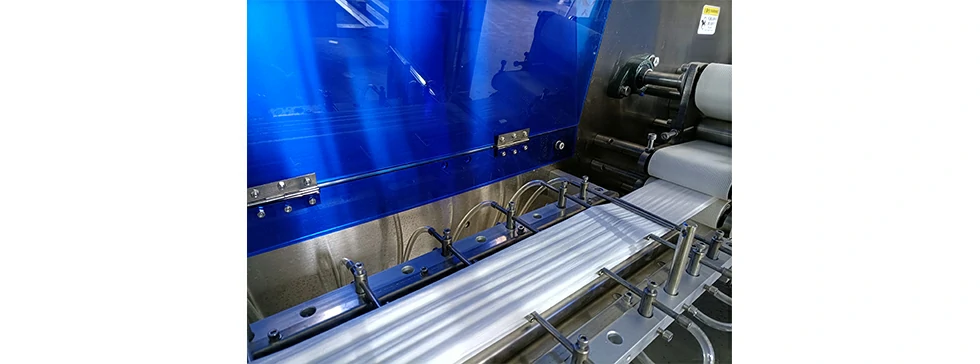Documenting maintenance and repair procedures for future reference is crucial for ensuring consistency, efficiency, and accuracy in machine servicing.
Here’s a comprehensive approach:
- Create a Standard Template: Develop a standardized format for documenting maintenance and repair procedures. This template should include sections for date, description of the task, parts replaced, steps taken, and any observations or notes.
- Detailed Descriptions: Provide detailed descriptions of the maintenance or repair task, including step-by-step instructions, specific tools used, and any safety precautions necessary.
- Visual Aids: Incorporate diagrams, images, or videos where applicable to visually illustrate the procedure. Visual aids can enhance understanding and clarify complex steps.
- Use Clear Language: Write the documentation in clear, easily understandable language. Avoid jargon or technical terms that might be unfamiliar to future readers.
- Include Checklists: Utilize checklists within the documentation to ensure that all steps are followed systematically. This helps in preventing missed tasks during maintenance.
- Record Observations and Findings: Document any observations, anomalies, or issues encountered during the maintenance or repair process. Include details of troubleshooting steps and their outcomes.
- Part Numbers and Inventory: Record part numbers, quantities, and suppliers for any components replaced during maintenance. This aids in inventory management and future procurement.
- Date and Signatures: Include the date of the maintenance or repair task and the signature or initials of the technician performing the procedure. This adds accountability and tracks who conducted the service.
- Version Control: Implement version control for the documentation. As procedures evolve or get updated, maintain a clear record of versions and revisions.
- Centralized Storage: Store the documentation in a centralized location accessible to authorized personnel. Digital formats or a cloud-based system ensure easy access and retrieval.
- Cross-Referencing: Link related documents or procedures to facilitate navigation and provide context. For instance, cross-reference between troubleshooting guides and maintenance procedures.
- Regular Updates: Review and update the documentation periodically, especially after major equipment modifications, to ensure accuracy and relevance.
- Training Materials: Integrate the maintenance and repair documentation with training materials for new technicians or personnel joining the team.
- Feedback Mechanism: Encourage technicians to provide feedback or suggestions for improving the documentation based on their experience in executing the procedures.
Comprehensive and well-documented maintenance and repair procedures serve as valuable resources for future reference, ensuring consistency, efficiency, and reliability in machine servicing.
What are the most common error codes or indicators signaling a malfunction in these machines?
Error codes and indicators vary between different types and models of machines.
However, several common error codes or indicators might signal malfunctions in wet wipes packing machines. Here are some typical ones:
- Low Productivity or Output: A decrease in the expected productivity or output without a clear reason or change in settings might indicate a malfunction. It can suggest issues with the packaging process or components.
- Error Code Displays: Machines often display alphanumeric error codes or symbols on their control panels indicating specific faults or malfunctions. These codes typically correspond to a manual or reference guide explaining their meaning.
- Machine Stops Abruptly: Sudden halts in the machine’s operation without user intervention or programmed stoppage could indicate a fault or safety feature activation.
- Unusual Noises or Vibrations: Unexpected noises like grinding, scraping, or unusual vibrations during operation might signal mechanical issues or misalignments.
- Flashing Lights or Alarms: Visual indicators such as flashing lights, warning symbols, spunlace wet wipes machine or audible alarms on the machine’s control panel might indicate various malfunctions.
- Temperature or Pressure Abnormalities: Deviations in temperature or pressure readings beyond normal operating ranges can suggest issues with heating elements, sensors, or fluid systems.
- Material Jams or Blockages: Frequent jams or blockages in the material feed or conveyor system can signal issues with alignment, sensors, or component wear.
- Inconsistent Sealing or Cutting: Irregularities in the sealing process or uneven cutting of wet wipes could indicate problems with sealing mechanisms, blades, or sensors.
- Sensor Failures or Errors: Error messages related to sensor failures, incorrect readings, or sensor-related malfunctions might indicate issues with detection or material handling.
- Software/System Errors: Software-related issues such as system freezes, glitches in the interface, or error messages related to software functionality can disrupt machine operation.
- Fluid Leaks or Spills: Visible leaks or spills of fluids used in the machine’s operation might indicate issues with hoses, connectors, or fluid systems.
It’s important to consult the machine’s manual or documentation provided by the manufacturer to interpret error codes or indicators correctly. Additionally, regular maintenance, calibration, and thorough inspections help in identifying and addressing issues before they escalate into major malfunctions.
